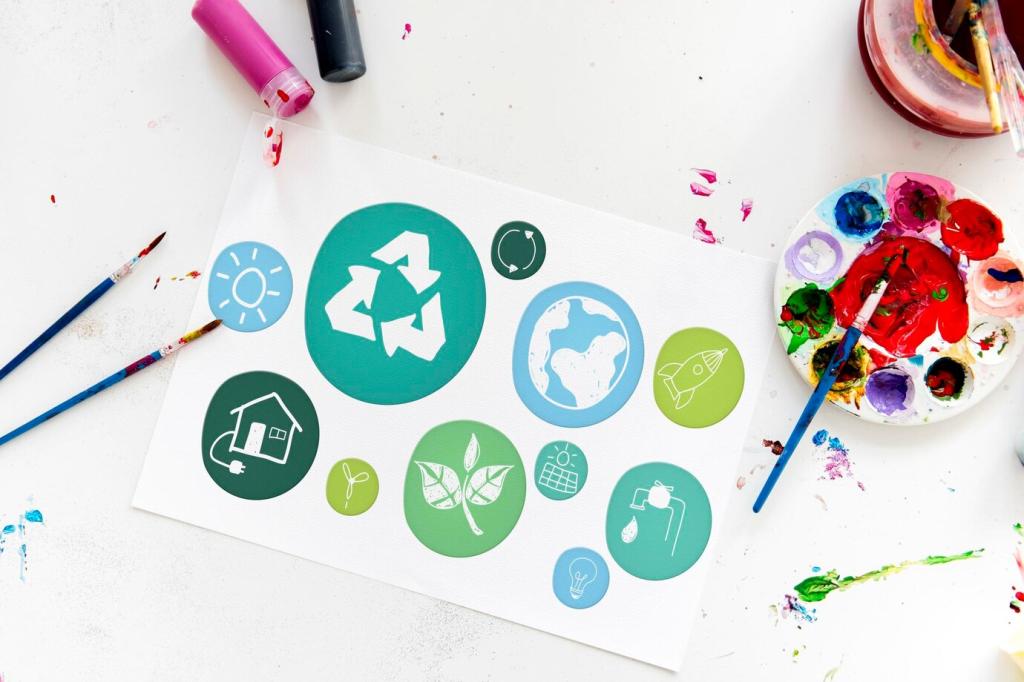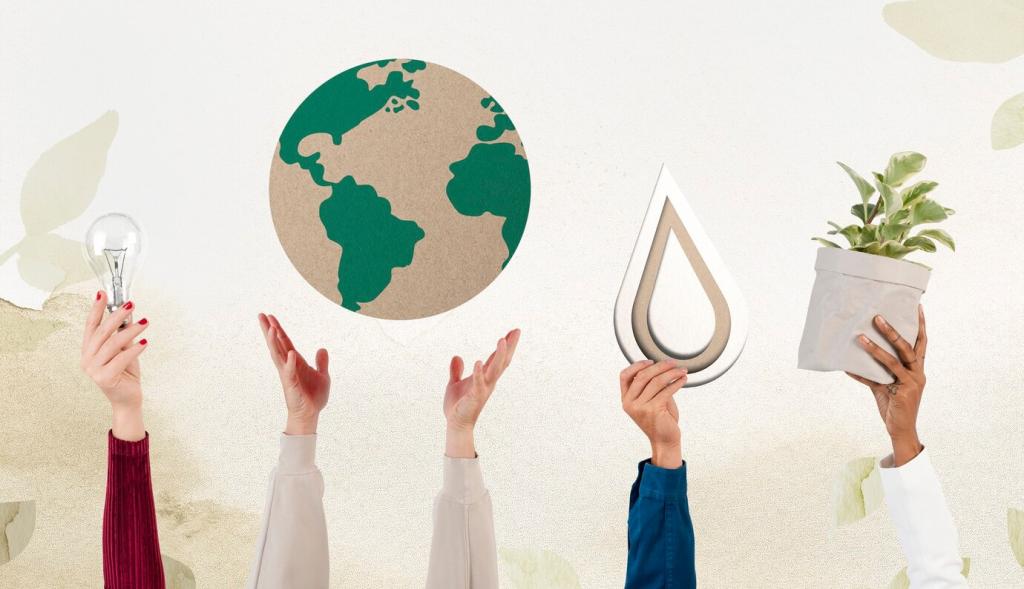Innovative Recycling in Interior Design
Innovative recycling in interior design represents a transformative approach to creating sustainable, stylish, and functional spaces. Designers and homeowners alike are increasingly turning towards upcycling, repurposing, and reimagining materials that would otherwise end up in landfills. This dynamic discipline focuses on eco-friendly techniques, creative uses of reclaimed materials, and the integration of conscious design principles. By embracing these innovative methods, the interior design industry is playing a pivotal role in reducing waste and promoting environmental responsibility, all while delivering visually striking and personalized interiors.
Rethinking Materials: The Foundation of Eco-Friendly Spaces
Salvaged Wood: Blending Character and Sustainability
Salvaged wood stands as a prime example of how recycled materials can impart unique stories and textures to interior environments. When old barns, factories, or ships are dismantled, their timber finds new life as flooring, wall cladding, or custom furniture. Designers value salvaged wood for its aged charm, durability, and distinct patina that cannot be replicated by new materials. Its reuse reduces demand for freshly logged trees and lessens urban waste, making it the backbone of many green interiors. With each piece offering a history, recycled wood fosters a warm, inviting atmosphere while championing responsible consumption.
Recycled Glass: A Touch of Modern Elegance
The integration of recycled glass in interiors has revolutionized the aesthetics of modern design. From countertops to light fixtures, this versatile material can be repurposed into stunning surfaces and decorative features. Recycled glass is processed and reshaped into new forms that reflect light beautifully, offering endless color and texture options. Its use greatly reduces landfill waste and the need for raw materials, making it both visually appealing and ethically sound. Whether incorporated subtly or as a focal point, recycled glass elevates interiors while underscoring a commitment to sustainability.
Innovative Plastics: Closing the Loop
The creative adaptation of recycled plastics in interior design is redefining the perception of this otherwise problematic material. Through advanced recycling technologies, waste plastics are transformed into innovative products such as carpeting, wall panels, and designer furniture. These applications not only divert plastic from oceans and landfills but also give rise to durable, colorful, and boldly designed interiors. The use of recycled plastics demonstrates how function, beauty, and responsible sourcing can coexist. With ongoing advancements, designers are finding ever more sophisticated and sustainable ways to repurpose plastic waste into desirable elements for contemporary spaces.

Upcycling and Creative Reuse: Breathing New Life into the Ordinary
Revamping vintage furniture is a cornerstone of upcycling in interior design. Designers expertly restore or refinish aging pieces, sometimes completely reimagining their purpose through new upholstery, painting, or modification. A mid-century cabinet might become a modern bathroom vanity, or a set of old chairs can be unified with bold, eco-friendly fabrics. These interventions prevent serviceable furniture from being discarded and preserve the craftsmanship embedded in older designs. The fusion of history and modern style not only curbs waste but creates deeply personal spaces that celebrate the beauty of transformation.
Environmental Impact: Moving Towards a Greener Tomorrow

Reducing Landfill Waste: Design with Purpose
One of the most significant advantages of recycled and upcycled interiors is the direct reduction of waste destined for overflowing landfills. Each piece repurposed or reused represents a deliberate diversion from the waste stream. By thinking creatively, designers can integrate materials that might otherwise be regarded as trash, thus extending the life cycle of products. This reduces reliance on raw resources and encourages a circular economy in which materials are continuously regenerated within the marketplace. Such thoughtful, purposeful design sets a precedent for communities and industries to rethink their approach to consumption and disposal.

Lowering Carbon Footprint: Energy-Efficient Choices
The use of recycled materials in design typically involves far less energy than manufacturing products from virgin resources. Salvaging timber, glass, metal, or plastics for new interiors minimizes mining, processing, and transportation-related emissions. Furthermore, many innovative recycling techniques in the design field now use local sourcing, which further decreases transportation impacts. By favoring upcycled and recycled goods, interior designers contribute to a measurable decrease in carbon footprint, demonstrating leadership in green building practices and showcasing how environmentally responsible decisions can enhance both aesthetics and performance.

Promoting a Circular Economy: Beyond the Design Phase
Innovative recycling in interior design does more than provide immediate aesthetic and environmental benefits—it propels the broader concept of a circular economy. By choosing materials and products that are designed for reuse or easy disassembly, designers ensure that today’s interiors will not become tomorrow’s waste. This paradigm encourages manufacturers to rethink product lifecycles and end-of-life scenarios, fostering a system where resources are used wisely and continuously reintroduced into new contexts. Through strategic planning and creative application, interior designers are making a tangible impact on resource conservation for future generations.
